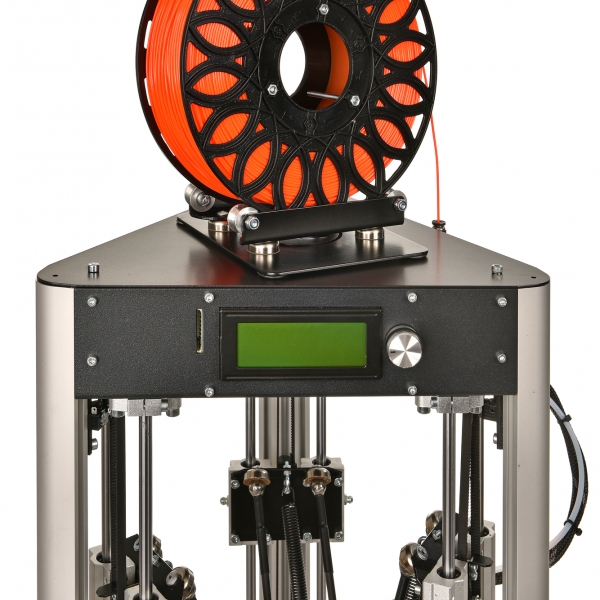Cortex 3d printer
Cortex Design • 3D Printing Can Wreak Havoc on Your Product Design
Cortex Design uses 3D printing to rapidly prototype hardware ideas in a physical form. Our in-house Objet polyjet 3D printer allows us to quickly print parts that could cost hundreds or thousands of dollars with subtractive CNC prototyping methods. It’s exciting technology, and it’s easy to understand why startups and Fortune 500 companies alike think 3D printing can augment their product design process, making it faster, cheaper, and leaner. In the future, 3D printing might completely replace other prototyping methods used in product design. It might even make advanced manufacturing in North America affordable again. It might deliver a personal replicator to every home.
But we’re not there yet. Not even close.Take a look at these pictures. Here’s a screenshot of a CAD design for a part:
Here is that same part made with subtractive CNC prototyping:
Here’s the same part made with a Polyjet 3D printer:
Now here’s the same part made with a cheaper FDM printer:
What is your reaction to each of these parts as a consumer? Or as a stakeholder? Or as an investor?
At Cortex Design, we work with companies at all levels of funding and maturity. We see a lot of product ideas influenced by the limitations of 3D printing. We’ve invested a lot of time in learning and testing what today’s most common 3D printers can and cannot do. We help our customers understand how 3D printers can hold back the product design process and create just as many problems as they solve. This is especially important for customers launching a manufactured hardware product for the first time.
We sometimes encounter an expectation that 3D printing is a stand-in for subtractive CNC prototyping – where parts are carved from solid blocks of the target production material by large computer-controlled milling machines. Subtractive prototyping is much more time-consuming (taking days rather than hours to complete a product iteration), much more expensive typically, and requires skilled model makers to hand-finish a part in order for it to look like what you’ll see in production. All of this makes 3D printers much more tempting to use. But if we rely on 3D printers too much in the prototyping phase, you can end up designing for the 3D printer instead of for production. You can also encounter performance issues that you will not have with subtractive prototyping. This can open up a Pandora’s box of problems and totally derail the product design process.
You can also encounter performance issues that you will not have with subtractive prototyping. This can open up a Pandora’s box of problems and totally derail the product design process.
3D printers don’t allow us to prototype with the same variety of materials we would use in the production of your product. The technology can make parts cheaply, which is great for figuring out an initial form for your product. But the sooner we can work with production-grade materials, the better. If we prototype a design using CNC machines, we can produce parts to a very high degree of dimensional accuracy that match the engineering performance and surface quality that an injection molding machine or a die casting machine will produce.
Great design is based on human experience. A big part of that is tactile response. If you have ever handled a 3D printed prototype, you’ll notice the difference in quality immediately. How does a product feel in your hands? How does it look? 3D printers are making strides in terms of quality, but most 3D printers create everything in layers, so you’re always going to have a “terraced” look. You can’t create compound continuous curved surfaces, so you can’t give your product the tactile, high-quality feel that will create a positive customer response. For that reason, we want to get high-quality prototypes in a stakeholders’s hands.
You can’t create compound continuous curved surfaces, so you can’t give your product the tactile, high-quality feel that will create a positive customer response. For that reason, we want to get high-quality prototypes in a stakeholders’s hands.
Not all 3D printers are created equal. FDM (fused deposition modeling) printers – which are the most inexpensive and common machines – have a minimum extruded bead width with which they can print, and tend to be weak between layers. If you design with this limitation in mind, you may need to print a prototype with thicker walls than you need to have in production, clunky ribbed features holding circuit boards in place, or excessively large screw bosses to stop them from snapping off in the prototype.
If you 3D print a mission-critical part – rather than producing it via CNC – and it fails, it’s not a useful failure. You may not know whether the part failed because of a design issue, or because the part isn’t strong enough. The solution might be to make the 3D printed part fatter, chunkier, or bigger than it needs to be in production, just so it is successful in prototype. You end up chasing a problem that may not even be a problem.
You end up chasing a problem that may not even be a problem.
These design detours might lead to a prototype that has that tell-tale “playschool” aesthetic, a design that lacks the refinement of truly great hardware products. It’s easy to think that you will just make the appropriate changes and adjustments when you get to production design, but by that point it’s time consuming and expensive to bring back the elegance you were originally looking for in your product.
If we work with CNC prototypes, we can design your product with production in mind, instead of making design decisions based on the limitations of the 3D printers. Take a look at this set of tips from Sculpteo for designing wall thickness for 3D printers. Now take a look at this this set of tips from Proto Labs for designing wall thickness for injection molding machines (quick-turn injection molding services come with their own set of design limitations, but alas that’s for another article). Which set of design considerations leads you closer to a production-ready product? Which is causing you to solve issues that have no relevance to the way your product will be manufactured?
There are a few companies that are pioneering the use of additive manufacturing rather than more traditional methods in mass production, but the vast majority of hardware companies don’t have access to that kind of capital technology investment or process change.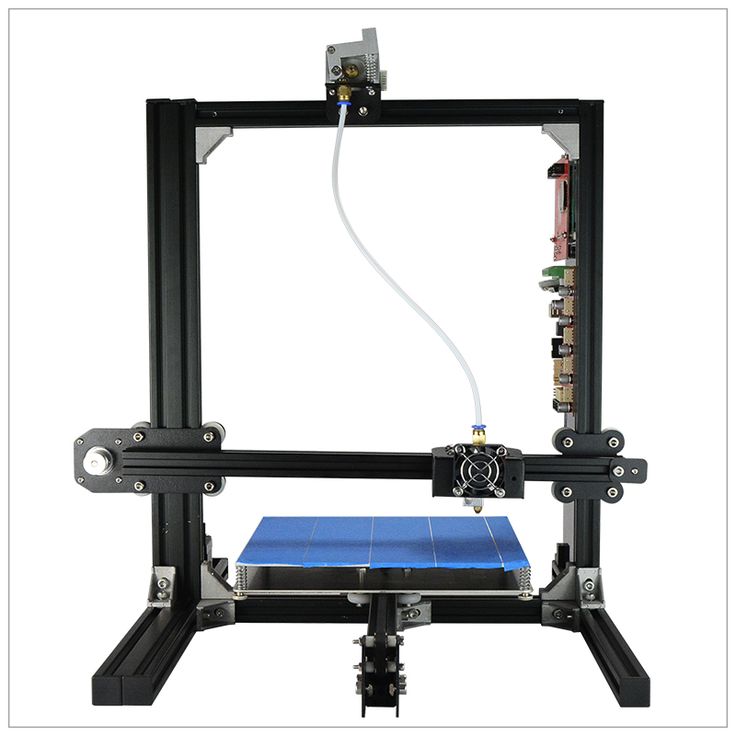 Until they do, why design for a manufacturing method that we aren’t going to use? Using CNC prototyping may cost a little more. It may take a little more time. But in the end, it’s aligning your process towards mass-volume production. CNC prototypes are still the closest thing to the injection molding and die casting processes that will manufacture your product at scale. Rather than designing for success in 3D printing, our approach is to design products for success in production.
Until they do, why design for a manufacturing method that we aren’t going to use? Using CNC prototyping may cost a little more. It may take a little more time. But in the end, it’s aligning your process towards mass-volume production. CNC prototypes are still the closest thing to the injection molding and die casting processes that will manufacture your product at scale. Rather than designing for success in 3D printing, our approach is to design products for success in production.
We use our Stratasys polyjet 3D printer at Cortex Design all the time, and a bevy of great service bureaus for SLA, SLS, and FDM prototypes. These are good for making small jigs, holding fixtures, check fixtures, and other small non-critical parts. They are useful for rapid testing of ideas. They are great for evaluating our design decisions in between delivering a prototype to a customer. But I would never recommend putting a fully 3D printed prototype in the hands of a stakeholder – it doesn’t provide them with what they need to make good decisions.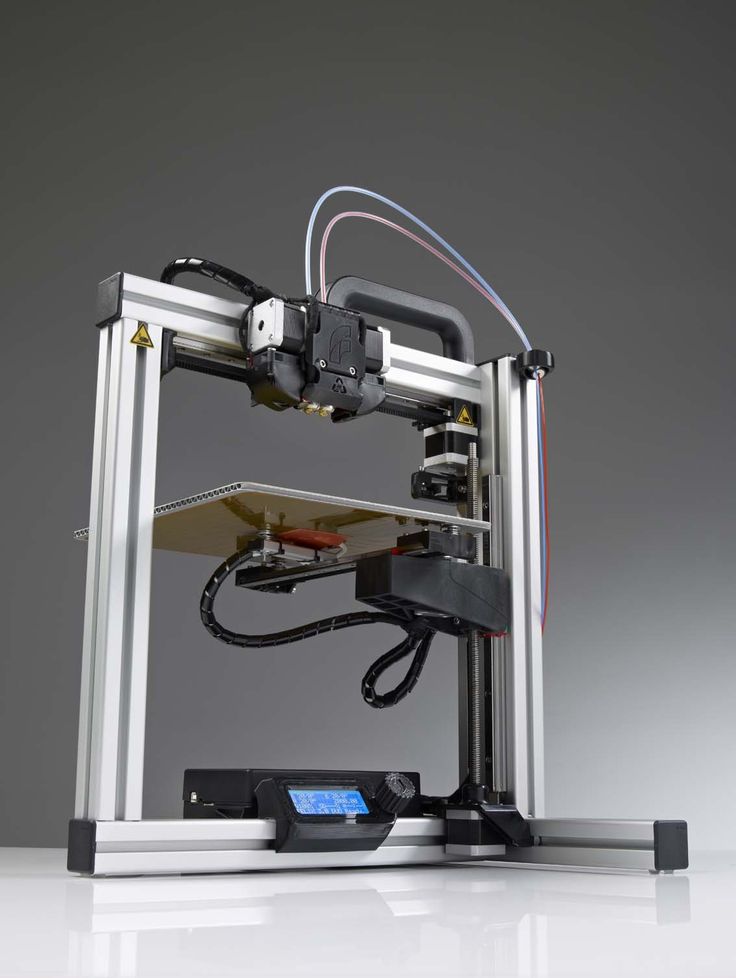
It’s probably only a matter of time until additive manufacturing becomes a tool for mass production, but we’re not there yet. I’m confident that we’ll eventually close the technological gap when it comes to material quality and also cycle time. At that point it will make sense to rely on 3D printers for product design and send the CNC machines to the big factory in the sky.
Until then, let’s design for the production processes we have available to us today.
If you’re interested in learning more about processes for each stage of product design, check out our Methodology Page, or get in touch! We are always looking to talk about design practices and where things are going.
Cortex 3D-printed cast for fractured bones by Jake Evill
Rose Etherington | 55 comments
3D-printed casts for fractured bones could replace the usual bulky, itchy and smelly plaster or fibreglass ones in this conceptual project by Victoria University of Wellington graduate Jake Evill.
The prototype Cortex cast is lightweight, ventilated, washable and thin enough to fit under a shirt sleeve.
A patient would have the bones x-rayed and the outside of the limb 3D-scanned. Computer software would then determine the optimum bespoke shape, with denser support focussed around the fracture itself.
The polyamide pieces would be printed on-site and clip into place with fastenings that can't be undone until the healing process is complete, when they would be taken off with tools at the hospital as normal. Unlike current casts, the materials could then be recycled.
"At the moment, 3D printing of the cast takes around three hours whereas a plaster cast is three to nine minutes, but requires 24-72 hours to be fully set," says the designer. "With the improvement of 3D printing, we could see a big reduction in the time it takes to print in the future."
He worked with the orthopaedic department of his university and his brother and fellow designer Oliver Evill on the project, and is now looking for backing to develop the idea further.
Jake Evill has just graduated from the Architecture and Design faculty at Victoria University of Wellington, with a Major in Media Design and a Minor in Industrial Design.
Read more about how 3D printing is transforming healthcare in an extract from our one-off publication Print Shift, including bespoke prothetic limbs and printed organs for transplants.
Here's some more information from Evill:
After many centuries of splints and cumbersome plaster casts that have been the itchy and smelly bane of millions of children, adults and the aged alike, the world over, we at last bring fracture support into the twenty-first century.
Click for larger imageThe Cortex exoskeletal cast provides a highly technical and trauma-zone-localised support system that is fully ventilated, super light, shower friendly, hygienic, recyclable and stylish.
The Cortex cast utilises the x-ray and 3D scan of a patient with a fracture and generates a 3D model in relation to the point of fracture.
Subscribe to our newsletters
Your email addressDezeen Debate
Our most popular newsletter, formerly known as Dezeen Weekly. Sent every Thursday and featuring a selection of the best reader comments and most talked-about stories. Plus occasional updates on Dezeen’s services and breaking news.
New! Dezeen AgendaSent every Tuesday and containing a selection of the most important news highlights. Plus occasional updates on Dezeen’s services and breaking news.
Dezeen DailyA daily newsletter containing the latest stories from Dezeen.
Dezeen JobsDaily updates on the latest design and architecture vacancies advertised on Dezeen Jobs. Plus occasional news.
Dezeen AwardsNews about our Dezeen Awards programme, including entry deadlines and announcements. Plus occasional updates.
Dezeen Events GuideNews from Dezeen Events Guide, a listings guide covering the leading design-related events taking place around the world.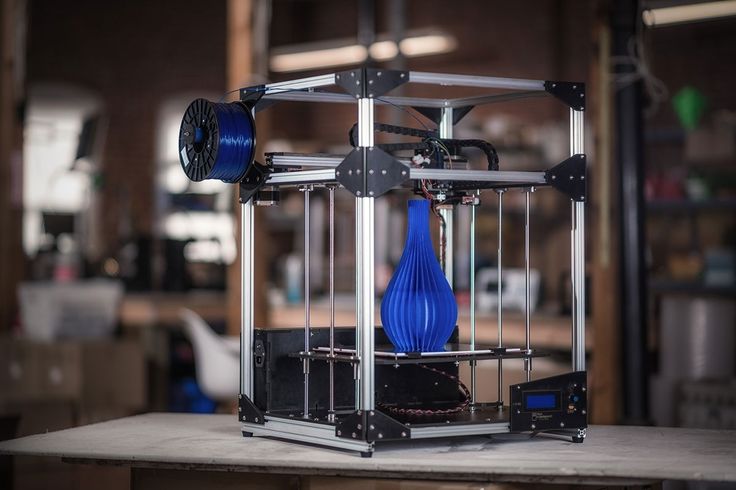 Plus occasional updates.
Plus occasional updates.
We will only use your email address to send you the newsletters you have requested. We will never give your details to anyone else without your consent. You can unsubscribe at any time by clicking on the unsubscribe link at the bottom of every email, or by emailing us at [email protected].
For more details, please see our privacy notice.
Thank you!
You will shortly receive a welcome email so please check your inbox.
You can unsubscribe at any time by clicking the link at the bottom of every newsletter.
STL file Doctor Neo Cortex
Nitro Araknid - Crash Bandicoot
1.24 €
Nitro Kettlebell - Crash Bandicoot
1.37 €
Nitro Zombot - Crash Bandicoot
1.37 €
Nitro Crab Figurine - Crash Bandicoot
1.24 €
Lion Skull
0. 56 €
56 €
Super Sonic miniature
1.87 €
Arista The Mermaid Articulated Print In Place No Support
2,72 €
Buzz Lightyear Flexible on-site printing without support
2.80 €
Flexible Jointed Halloween Zombie
2.62 €
Mike Wazowski Articulated seal in place
2.73 €
Cute Platypus Articulated Print In Place No Support
2.48 €
Stretch print In Place Creepy Spider
2,75 €
Best Files for 3D Printers in the Art Category
Ornate Dragon
4.11 €
Deactivated
Cursed candy bowl
€1.01 -twenty% 0. 80€
80€
Cut/Copy We Are Explorers - 3D Printed Video
Free
Easter egg box
Free
FANART - Scrooge McDuck - DIORAMA
13 €
Fish Fossilz
Free
Kang Sae-byeok [Squid Game]
8 €
Art category bestsellers
Flexi PRINT-IN-PLACE Hand
2.01 €
Biting dragon
3 €
Flexi Print-in-Place Dinosaur Brachiosaurus
3.13 €
Flexi-print Imperial Dragon
4.06 €
Cute frog with flexi print
2.01 €
Cute circus baby elephant with flexi print
3.03 €
Crystal Dragon Articulating Animal Flexi Wiggle Pet Printing In Place Fantasy
4. 11 €
11 €
GIANT CROCODILE HINGED
4.54 €
Cute T-Rex dinosaur with flexi print
3,03 €
Flexi-print "Fish"
2.01 €
Triceratops on flexi printer
3.03 €
Leopard gecko articulated toy, imprinted body, snap head, cute flexi
3,07 €
Bearded Dragon Articulated Toy, imprinted body, snap head, cute flexi
3,07 €
Cute skeleton with flexi print
3.03 €
Articulated bat toy, imprinted body, snap head, cute flexi
3.58 €
Archaeopteryx nibbler
3 €
Do you want to support Cults?
Do you like Cults and want to help us continue our journey on our own ? Please note that we are a small team of 3 people, so supporting us in maintaining activities and creating future developments is very easy.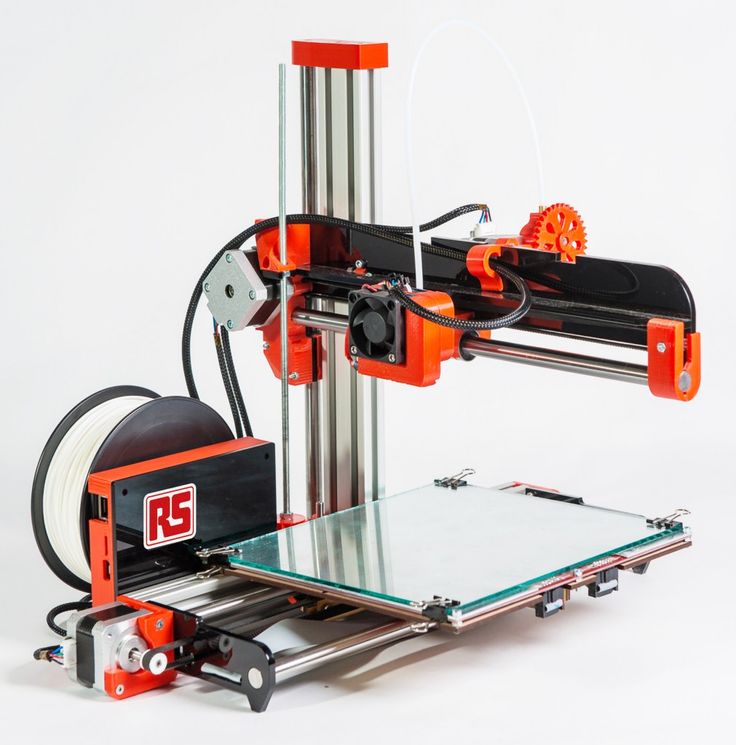 Here are 4 solutions available to everyone:
Here are 4 solutions available to everyone:
-
AD: Disable the AdBlock banner blocker and click on our banner ads.
-
AFFILIATION: Shop online with our affiliate links here Amazon.
-
DONATIONS: If you want, you can donate via PayPal here.
-
* INVITE FRIENDS: * Invite your friends, discover the platform and great 3D files shared by the community!
Creality HALOT SKY
Creality HALOT SKY 3D printer
Creality HALOT SKY 3D printer is Creality's first photopolymer printer. Equipped with many useful features that make the use of the device comfortable. The 3D printer is suitable for use at home, as well as for professional areas - medicine and jewelry.
Benefits of Creality HALOT-SKY 3D Printer
1. - print area 192x120x200 mm;
2 .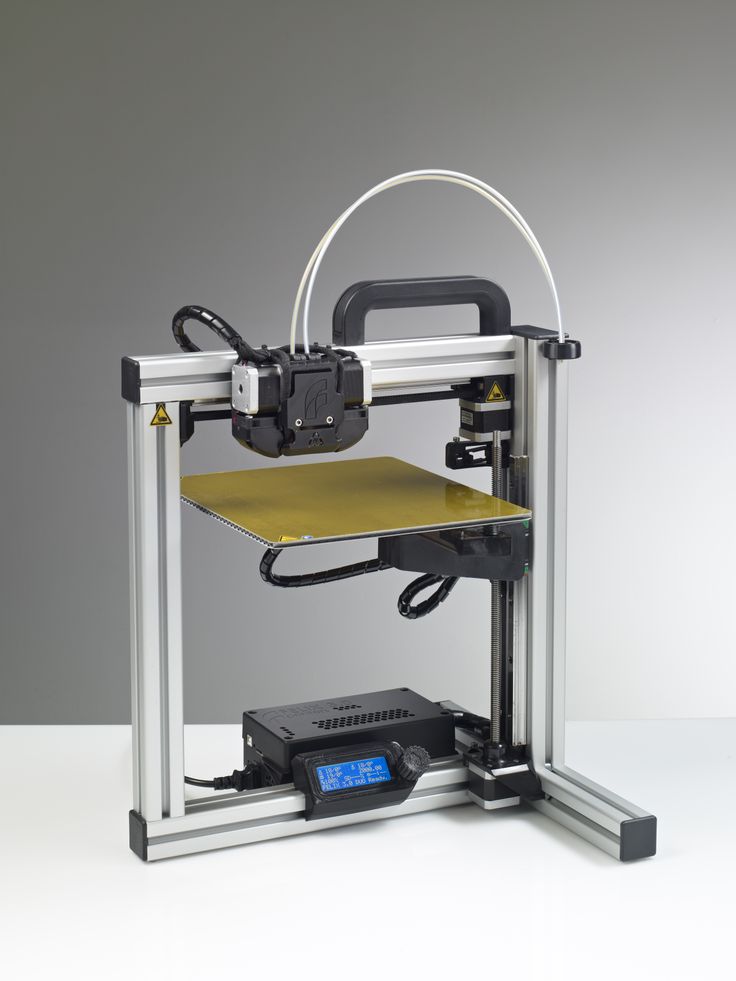 - high resolution and accuracy;
- high resolution and accuracy;
3. - original ILS Creality light source;
4 . - Wi-Fi module for data transmission;
5. - easy operation.
HALOT SKY has a working area 192x120x200 mm which is quite large. The monochrome LCD display has a high resolution of 3840x2400 pixels . Together with the new original ILS light source, this achieves a high degree of precision and good detail.
The new Z axis mechanics allows printing with an accuracy of up to 0.01 mm and a layer height of up to 10 µm .
The manufacturer paid great attention to the internal content of the printer, namely electronics. The ARM Cortex-A53 processor ensures the smooth operation of the 3D printer and the implementation of all functions.
Creality HALOT-SKY is equipped with Wi-Fi module for instant data transfer. The built-in firmware update feature allows you to use the full potential of the device. All processes can be controlled using a 9 touch screen0162 5 inch .
The manufacturer has taken care of comfort and safety. The transparent cap allows you to observe the progress of the print and absorbs almost 100%. Its flip design saves desktop space.
The compact desktop printer has all the features you need to work comfortably for professionals and advanced users. Accurate and fast printer can handle any task.
Specifications
| Basic | |
| Media | Photopolymer resin |
| Print Technology | ILS |
| Printable area | 192x120x200 mm |
| Print/Grow Speed | 1 - 4 s/layer |
| Layer thickness | 0. |








